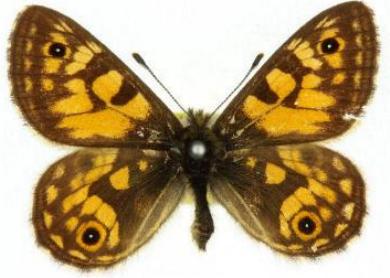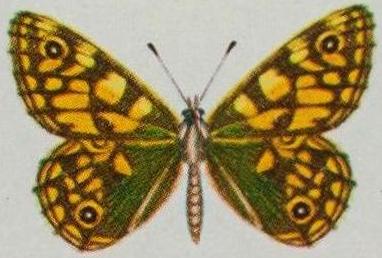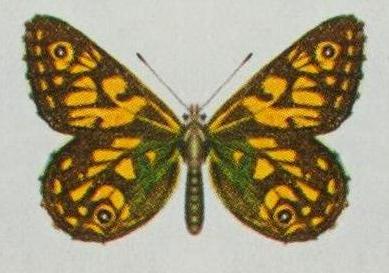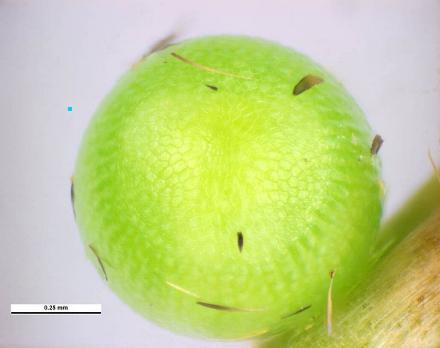
| Alpine Silver Xenica SATYRINAE, NYMPHALIDAE, PAPILIONOIDEA | (donherbisonevans@yahoo.com) and Stella Crossley |

(Photo: courtesy of CSIRO/BIO Photography Group,
Centre for Biodiversity Genomics,
University of Guelph)

| Alpine Silver Xenica SATYRINAE, NYMPHALIDAE, PAPILIONOIDEA | (donherbisonevans@yahoo.com) and Stella Crossley |

(Photo: courtesy of CSIRO/BIO Photography Group,
Centre for Biodiversity Genomics,
University of Guelph)
These Caterpillars are initially green with a black head. Later instars are brown with indistinct longitudinal lines. The caterpillars have a brown head that has a pair of small horns, and twoprojections on the anal segment. The caterpillars feed on various species of Grass (POACEAE) including :
The pupa is brown, with a white dorsal abdominal ridge.

The wings of the adult butterflies are brown with yellow patches. On the upper surfaces, each wing has an eyespot.

Underneath, the forewings are similar, but each hindwing has two eyespots. The butterflies have a wing span of about 3 cms.

The species is found as two races:
in the mountains of

The eggs are pale green and spherical, and covered in a microscopic tracery of about a 1,000 interlinked hexagons. The eggs have a diameter of about 0.7 mm. They are laid singly on the underside of leaves of a foodplant.
Further reading :
Michael F. Braby,
Butterflies of Australia,
CSIRO Publishing, Melbourne 2000, vol. 2, pp. 494-495.
Gustavus Athol Waterhouse & George Lyell,
The Butterflies of Australia,
Angus & Robertson, 1914, Sydney, p. 43, No. 41d, and also
Plate 40, figs. 823, 824.
 caterpillar |  butterflies |  Lepidoptera |  moths |  caterpillar |
(updated 21 July 2004, 12 Septermber 2025)